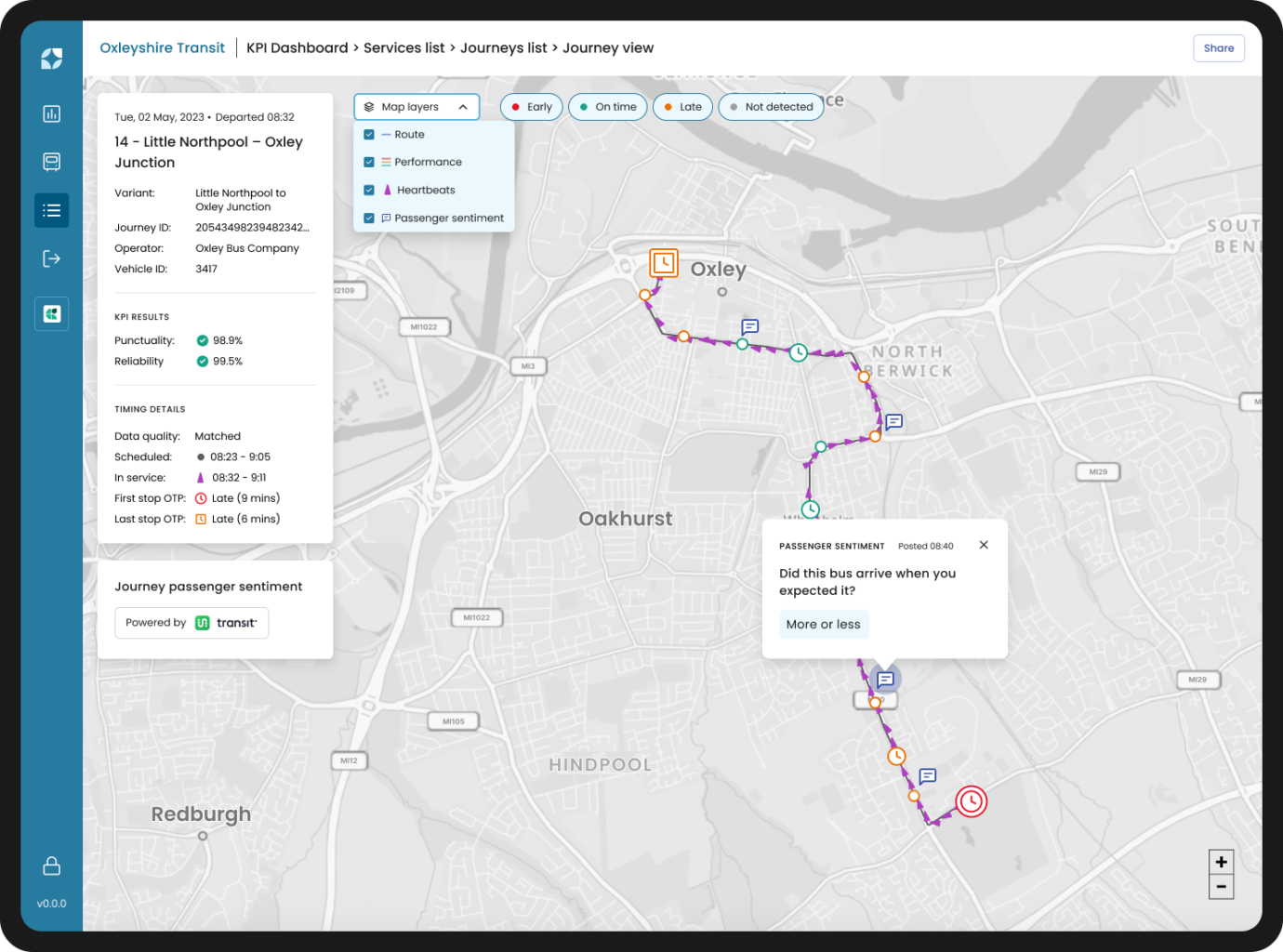AI in buses and coaches – an insight
Snapper Services’ CEO, Miki Szikszai, tells us how AI could transform bus and coach operations
Artificial Intelligence (AI) is a term that has in a relatively short space of time taken up much headline space. This brave new world of machine intelligence is no longer science fiction, but is being used across numerous applications in various industries, not least of which the bus and coach sector.
One of the companies making use of AI in our industry is fleet management solutions specialist Snapper Services. The business has recently partnered with Hayden AI, a global player in vision AI and spatial analytics, to enhance data analysis for public transport providers. By leveraging Hayden AI’s mobile perception platform installed on buses for transit zone enforcement and Snapper’s Mosaiq Insights package, the partnership unlocks insights for transport companies from new and existing data sources.

Hayden AI’s ‘vision’ AI platform is installed on hundreds of buses for automated bus lane and bus stop enforcement. The platform has had success in improving road safety, transit reliability, transportation accessibility for people with disabilities, and sustainability. Snapper’s Mosaiq platform is used by transport providers globally to understand trends impacting punctuality and service delivery. Together, the companies aim to offer robust data analyses for transit agencies in one package.
B&CB asks Snapper’s CEO, Miki Szikszai, what the advantages are of operators using AI systems in their operations.
Removing the pain

“Informed by actionable insights, analysts can use AI to weave together disparate datasets to suggest schedules and routes that respond to the community’s needs” – Miki Szikszai, Snapper CEO
Artificial intelligence (AI) refers to the wide range of available technologies that can proactively perform complex calculations or recurring tasks, explains Miki Szikszai. “These can range from removing the pain of manual tasks all the way to simulating human intelligence,” he said. “In public transit, this could mean using machine learning to identify patterns and data trends without manual calculation, or complex user inputs. This lightens the load for analysts seeking opportunities to improve network performance, freeing them from time-consuming number crunching and directing them to actionable insights.”
AI can also support optimisation efforts that enhance the passenger experience. Miki said: “Informed by actionable insights, analysts can use AI to weave together disparate datasets to suggest schedules and routes that respond to the community’s needs. By leveraging AI to first pinpoint problems and then accelerate our optimisation efforts, we can really shift the needle on network performance and passenger experience.”
While these two possibilities of AI could be key to transforming the future of our industry, the UK transit sector still relies on deeply embedded legacy systems, according to Miki. He said: “This means that UK transit providers aren’t necessarily ready for this natural next step, risking these transformative solutions going unused and not keeping up with passenger expectations.
“On top of this, AI systems or machine learning technology can require substantial effort to develop to the point where it is reliable, but without financial and human investment, we won’t fully realise AI’s potential in our industry.
“That said, AI doesn’t need to mean bespoke or large-scale installation. Transit operators can harness its power through leveraging proven AI technology in existing applications. For example, organisations such as Optibus use AI to refine data and suggest schedule and route improvements.
“As part of a wider ITS toolkit, utilising technology this way creates new value from AI which can be directly applied to improve the passenger experience. This means there is no need to invest in your own data science or model training – it is already available off the shelf.”
As technology continues to evolve, using AI in this way could become increasingly dynamic and enable more complex queries, without requiring deep technical skill. Miki said: “The crucial advantage of AI is the benefits it can bring to transit customers when applied at scale. AI empowers passengers with the knowledge that all the heavy lifting behind the scenes is taken care of, with authorities and operators free to spend more time delivering excellent public transit experiences.”
Cleaning data
Miki recognises operators have challenging day-to-day roles that can span several different business areas, meaning they don’t often have time to work through mountains of data to find hidden optimisation opportunities. Miki said: “Tools and services that enable operators to deliver excellent service and improve the passenger experience—all day, every day—are invaluable.”
He notes Snapper’s Mosaiq is designed to meet this need by taking on the complex task of ingesting, matching and cleaning data from various sources. He said: “Our analytics platform, Mosaiq Insights, makes sense of data by presenting network performance in a way that is easy to interrogate and understand. When operators are ready to integrate AI tools, having access to a platform like Mosaiq Insights will ensure they can easily assess the impact AI is having on the performance of their transit network.
“From a strategic perspective, the authority and operators are always in control of their performance data, and can choose which services to share their data with, to make AI-driven improvements. This also provides assurance that the operator is working from one single source of data truth, rather than different sources for different tools, and protects their sensitive data from being used without their knowledge.”
Snapper’s AI
Snapper leverages AI now to improve its services and analytics offering, detecting data anomalies to improve the underlying quality of data in the Mosaiq platform. The team also uses AI to support the development of its Mosaiq platform, ensuring it continues to evolve at a high cadence while also adapting to changing customer needs.
Miki said: “Our focus is finding ways to create new value from existing AI solutions, and looking at how this translates to delivering our services.”

Operators and authorities are gaining the benefits now of improved data quality and a rapid cadence of trustworthy new actionable insights, according to Miki, that enable them to improve their networks. Recent examples include visualisation of the impact of cancellations, comparisons of on-time performance and contract management.
Doing DRT
Local authorities have for a number of years experimented with demand responsive transport (DRT), believing it to be a useful tool in plugging the gaps where conventional bus services can’t affectively serve. The expansion of these services continue and AI plays its part in these too.
Snapper’s Mosaiq Insights can join up data to help identify strengths and weaknesses in the transit network, according to Miki. He said: “Authorities can work with these findings to implement new solutions, whether that’s an adjustment to their fixed services or integrating DRT or other solutions into their network. Our API can be used by other providers to understand where modes such as DRT and scheduled bus services could support the network.
“In most UK cities, operators currently set their own timetables, routes and fares. This decentralised model involves any number of private operators working with the authority in a single area – causing potential miscommunication between operators, a lack of network alignment, and an inconsistent passenger experience.”
AI and franchising
For many operators, focusing on AI to keep up with technology trends may not be hot on the agenda when what could be argued is one of the biggest shake-ups of buses in the UK is looming on the horizon: franchising.
When operating as a franchise, authorities can determine bus routes and fares according to their insight into how best to serve their local area and integrate with wider urban planning objectives. Miki said: “This can mean an improvement in services, reduced congestion, and cleaner air, while the authority also gains greater visibility and control over the network performance. It can be an important step towards meeting Net Zero commitments.”
According to Miki, Mosaiq can support the move towards franchising by delivering a single, consistent view of network performance for all participants, while maintaining commercial integrity. He said: “The authority can see the overall performance of the network and each operator can see their own part of the performance. Both parties can focus on what’s going well and where improvements need to be made.
“Sophisticated analytics solutions can improve the relationship between operators and authorities by providing transparency around network performance, which enables more effective collaboration between both parties. With accurate and robust data insights, operators are rewarded when meeting the requirements set out by authorities, while local authorities benefit from full visibility into services and total confidence that their communities’ requirements are being met.”